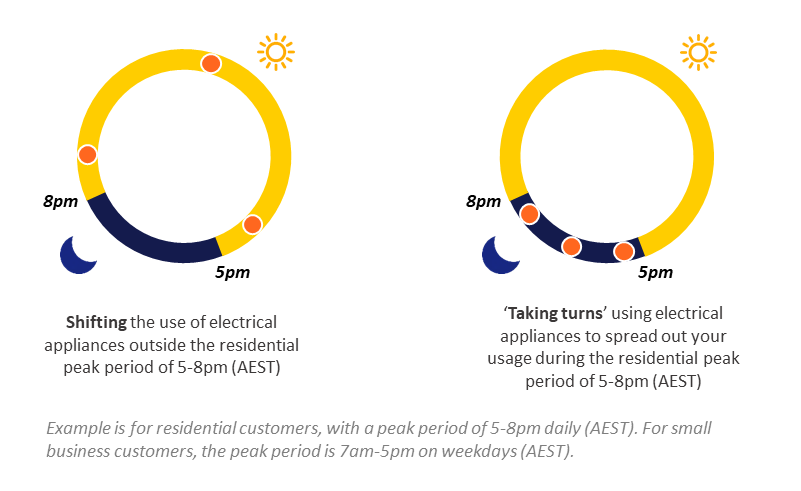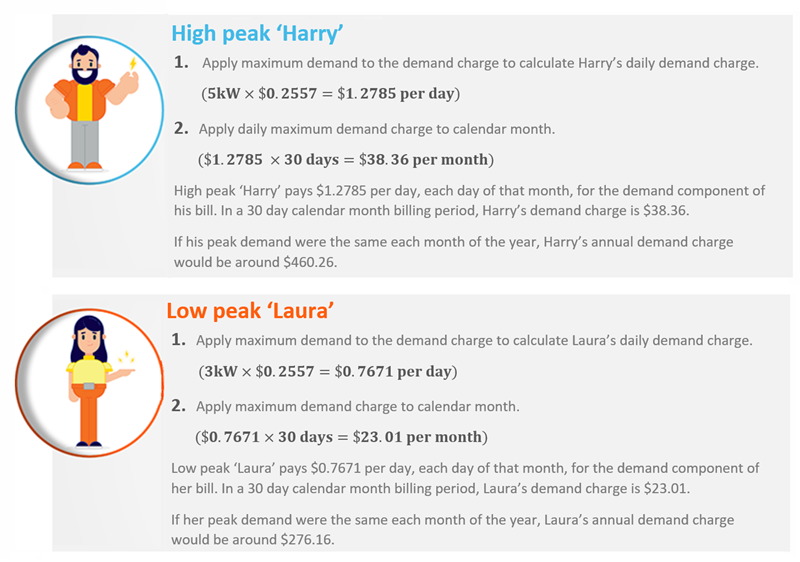A tariff is the price you’re charged for your energy use and can vary depending on the type of meter you have. We offer a range of network tariffs which are design to work with the grid and improve the way we use and manage the network.
Tariff Structure Statement
Our Tariff Structure Statement (TSS) includes all of the information about our network tariffs and how these may change in the future. We’re also required to publish this under the National Electricity Rules:
Our TSS forms the basis for our five-year electricity network plan and in preparing it, we consult widely with a range of customers about how we can design tariffs that best suit the community and their electricity needs.
Peak demand tariffs
We introduced peak demand tariffs for residential and small business customers in December 2017, after the Power of Choice rules changed to empower customers to make better-informed choices about their electricity usage.
Who’s on a peak demand tariff
There are three main situations where residential and small business customers will be assigned to our demand tariff:
- You move into a premise with a smart meter
- If your old meter stops working, and it’s replaced with a smart meter
- If you choose to purchase and install a smart meter
You can switch from this tariff to a time-of-use tariff, or vice versa, once in every 12 month period.
How it works
Our peak demand tariff is designed to help you benefit from the installation of your smart meter and choose when you use electrical appliances during peak times.
It considers not just the total amount of electricity you consume, but the maximum demand your household or small business places on the network during peak periods. This includes a fixed charge, a consumption charge, and a peak demand charge.
A fixed charge is paid daily, regardless of how much energy is used.
A consumption charge is how much you pay for the energy you use, at any time of day or night.
A peak demand charge is determined by the highest amount of electricity you consume within any 30-minute interval during the peak periods in a calendar month. For residential
customers, peak periods are daily from 5pm-8pm AEST, and for small business customers, they are weekdays from 7am-5pm AEST.
Take control of your bill
Our peak demand tariff allows you to reduce your electricity bill with a few simple changes to your routine. Typical electrical appliances with high energy usage include some heaters, ovens, washing machines, clothes dryers, dishwashers, air conditioners, vacuum cleaners and pool pumps.

Peak demand tariff examples
The peak demand tariff is equal to the sum of the fixed charge, consumption charge, and the peak demand charge.

Calculate the demand charge
Let’s take two customers as examples: ‘high peak Harry,’ who often runs his dishwasher, air conditioner, and electric heater at the same time, and ‘low peak Laura’, who spreads her energy use throughout the day.
For Harry, his highest energy use was 5kW, reached on the 11th day of the month. For Laura, her highest energy use was lower at 3kW, happening on the 13th day of the month.

To calculate the demand charge, we multiply Harry’s and Laura’s highest energy use by the daily demand charge, and then by the number of days in the month. This cost reflects the need for the energy network to provide your highest energy demand on any day of the month.

Calculate the fixed charge and consumption charge
The fixed charge is calculated by multiplying the daily access charge by the number of days in the period. For residential customers, Evoenergy’s fixed charge is $154 per year (42.218 cents x 365 days) or around $12.84 per month.
The consumption charge is calculated by multiplying the energy charge (5.123 cents / kWh) by the amount of energy used in the period. A typical residential customer who uses 6,300 kWh per year, will pay a consumption charge of $322.73 per year (5.123 cents × 6,300kWh) or around $26.89 per month.
Residential Tariff Trial
As the energy landscape changes, more Canberrans are choosing to connect the latest energy products at home, such as solar, batteries, home energy management systems and electric vehicles. We’re committed to ensuring we offer a service optimises the network connection process and maximises the efficiency and benefits of energy products once they’re connected.
Our Residential Tariff Trial will help us further understand the interaction between these technologies and the electricity network. It will allow Evoenergy and participants to work together to explore how these technologies may help balance peaks and troughs in Canberra’s electricity supply.
The Residential Tariff Trial started in July 2021 and we will then consider the broader application of the tariff to the ACT community.
Some documents on this page are historical and refer to ActewAGL. From 1 January 2018 the Networks part of ActewAGL Distribution changed its name to Evoenergy.
